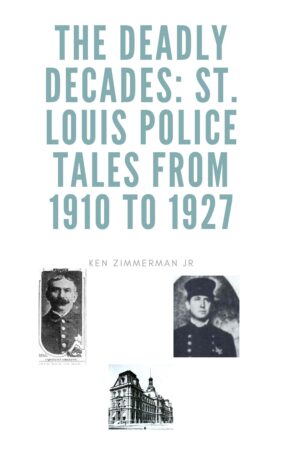Death of the Head Rat
William T.”Willie” Egan took over “Egan’s Rats” on the death of his older brother Tom in 1919. Thomas “Snake” Kinney and his childhood friend and brother-in-law Tom Egan formed St. Louis’ criminal organization in the late 1800s. Both Kinney and Tom Egan were saloon keepers and Democratic politicians. They employed “the Rats” for political slugging and other criminal activities.
Thomas Kinney died in 1913. Tom Egan died at 44 years of age in 1919. On the death of his brother, Willie Egan took over leadership of the Rats. Born on June 1, 1884, the thirty-five year old Willie Egan was not as respected as his older brother.
The leader of a criminal organization must ruthlessly hold onto power because there are always younger gangsters who want to be boss. In 1916, a feud occurred within “The Rats” that left Thomas “Skippy” Rohan dead in Tom Egan’s saloon. The killing violated one of the cardinal rule of the Rats. You did not fight in the bosses’ saloon.
Tom Egan settled the issue before it became an all-out war but after his death the old feud erupted. Within two years, it would claim the life of his younger brother and cause Max Greenberg to leave St. Louis.
Greenberg came to the Rats from Detroit, Michigan. He was responsible for several murders and taught the Rats bank robbery. After he was sentenced to Federal prison, Willie Egan and Thomas Kinney’s brother Michael secured his release. Greenburg repaid Egan by trying to undercut his bootlegging operation.
On March 11, 1921, Willie Egan repaid Max Greenburg by attempting to shoot him. Greenburg was only wounded but his friend, lawyer and Democratic politician John Sweeney was killed. On October 31, 1921, Greenburg got his revenge. The November 1, 1921 edition of the St. Louis Post-Dispatch described the circumstances leading up to the shooting.
Willie Egan should have been suspicious when Greenburg very conspicuously left town on a noon train for New York with his lawyer. He apparently drew enough of a crowd that numerous witnesses watched him leave.
Later on that evening about 9 p.m., Willie Egan was standing in front of his saloon at 1400 Franklin Avenue, when a black sedan pulled up and shot Egan multiple times. Two drivers and a plumber, William “Dinty” Colbeck, took Egan to the hospital but Egan’s car ran out of gas. Colbeck did own a plumbing shop but he was Egan’s chief lieutenant. He took over the Rats upon Willie Egan’s death.
While Egan had been seen with a revolver shortly after he was shot, the police did not find a revolver on him at the hospital. Willie Egan also had 431 dollars in his pockets. The police did not suspect robbery anyway. They believed the shooting and subsequent death of Willie Egan was related to the earlier Sweeney and Greenburg shooting.
Willie Egan died about 10:00 p.m. from his wounds at 37 years of age. Egan steadfastly refused to name a suspect in his shooting. Over the next several days, St. Louis Police arrested thirteen men but none was ever charged with the murder. It is still considered unsolved.
Max Greenburg returned to town briefly. When “Dinty” Colbeck took over, Greenburg returned to New York for good. He was killed in 1933 by unknown assassins.
The Rats would continue as an organization until 1924 when Colbeck and the other leaders drew long federal prison sentences for robbery. Most organized crime then moved to the counties on the Illinois side of the St. Louis Metro area.
You can leave a comment or ask a question about this or any post on my Facebook page and Twitter profile.
Pin It



